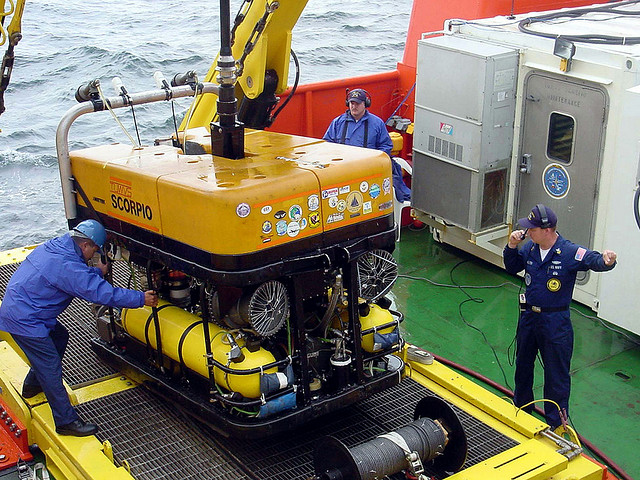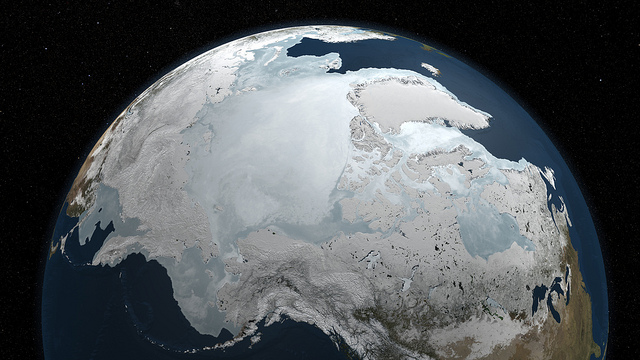Sarah Bedolfe
Science, technology, engineering, and mathematics in the ocean.
Focusing on different aspects of science, technology, engineering, and math, as they pertain to the ocean.
For being just a few miles away, the seafloor is incredibly difficult to get to and very little is known about it. With its intense dark, cold, and pressure the deep sea is about as hospitable as the moon. Engineers are working to make it easier and safer for humans to visit the deep sea. But for now scientists studying the seafloor often use Remotely Operated Vehicles – ROVs for short.
An ROV is a robot that can go underwater and be controlled from the surface via cable. The machine can work deep underwater in dangerous situations – around hydrothermal vents where the water can be boiling hot and full of sulfur, for example – while scientists remain safely and comfortably above water.
Some ROVs are small and simple, with just a camera to show the driver its surroundings. NOAA even offers tips on how to build one at home. Others are large, capable of working in extreme conditions, and equipped with all kinds of tools such as claws for picking things up, thermometers, and other advanced equipment for learning about the environment.

Photo by Marion Doss, Flickr, Creative Commons License
In addition to academic applications, ROVs are used heavily by the oil and gas industry and by the military for exploration, construction, and to collect samples of the water, sediment, or organisms for later study. ROVs can also collect images of the seafloor from which researchers can gain valuable data.
In the Arctic and Antarctic, ROVs are an important tool because the water is frigid, and the thick ice makes surfacing more difficult for divers. An ROV can be sent into the cold, dark depths more easily than a human diver to collect information. This is an important area of research because so little is known about our planet’s underwater world.

Photo by NOAA Photo Library, Flickr, Creative Commons License
This video, the first footage ever captured of the Gakkel Ridge on the Arctic seafloor, was captured by an ROV.
The work of ROVs will continue to contribute to scientific knowledge where humans cannot (yet) go.







